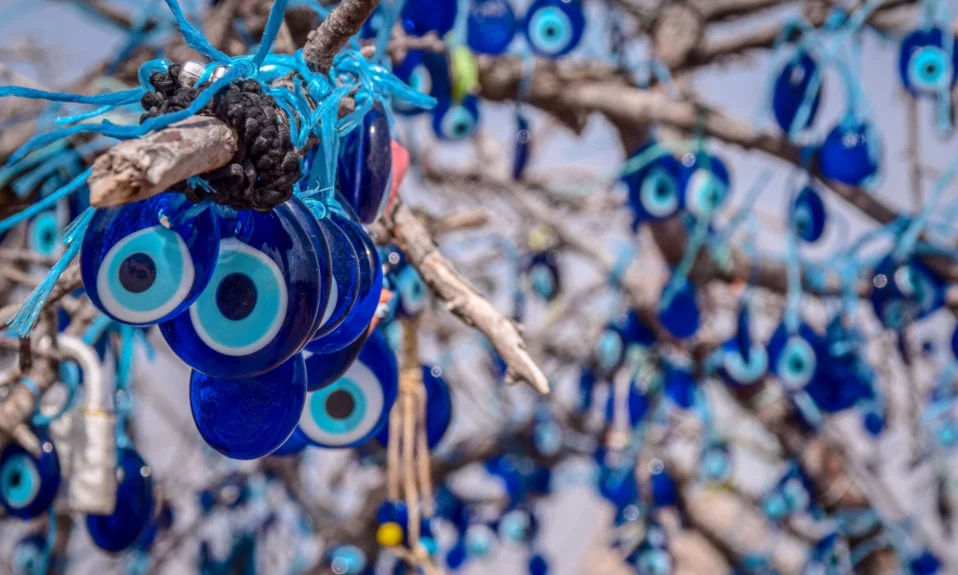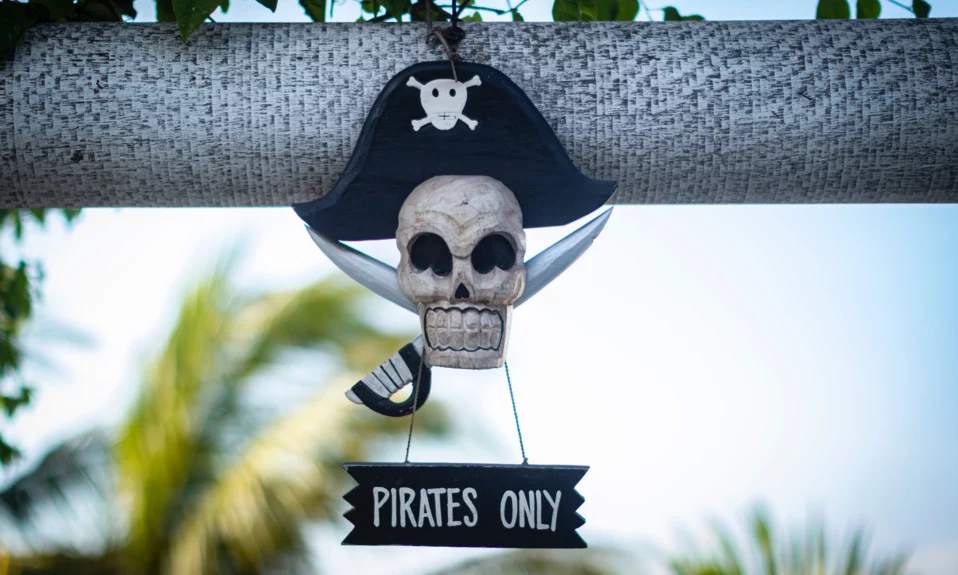
Van Gogh, Frida, Picasso, etc. are all painters who, regardless of their particular style, all saw painting as a way of expressing themselves and thus showing their creativity. There are countless tools to show this creativity, colored pencils are one of them.
The combination of colors is an important issue in painting. The color combination of each painting tool has its own techniques, although sometimes difficult, but at the same time it creates a clear, precise and beautiful art.
If you are painting with a colored pencil, and you want to have a painting with a high standard, here are some useful tips on color combination and its different techniques. These tips are for your easier use of colored pencils. Well let’s go!
- Color combination in painting
- Combining in painting with colored pencils
- Useful tips for blending with colored pencils
- Methods of combining color with colored pencils
- How to combine color with colored pencils
- A few common color combinations
- Color palette inspiration of colored pencil painting
- The last word
Color combination in painting
Before learning the techniques of combining colors with colored pencils, it is better to get acquainted with color combinations in painting. The choice of colors is very influential in our emotions. So to properly convey a feeling through painting, we must learn to use colors in the right place.
In general, all colors in a painting are a combination of the three primary colors, red, blue, and yellow. From the combination of these three colors, thousands of different colors are obtained. It is also important to know that colors are divided into cold and warm categories in the knowledge of color composition.
For this purpose, colors that convey a feeling of warmth, excitement and joy, such as red, orange and yellow are called warm colors. In contrast, colors that convey a feeling of coldness, calm, and sadness, such as green, blue, and purple, are called cool colors. Mostly, colors that do not fall into these two categories, such as white, black, gray, etc. are called neutral colors.

Combining in painting with colored pencils
It is true that one can create a beautiful and artistic work without learning to combine color with colored pencils. But combining colors always gives a beautiful effect to the painting. One of the easiest tools for combining color in painting is colored pencils. Because this painting tool can easily combine colors. In combining color with colored pencils, we first use light colors, then we put dark colors on light colors. For this reason, darkening a color is much easier than lightening it. Because it can be easily darkened by adding a color complement.
In combining color with colored pencil, in addition to adding complementary colors, you can also add white, gray and black to the desired color and darken it. In this way, by adding white, the desired color becomes dull and light, and by adding gray and black, the desired color becomes dull and dark.
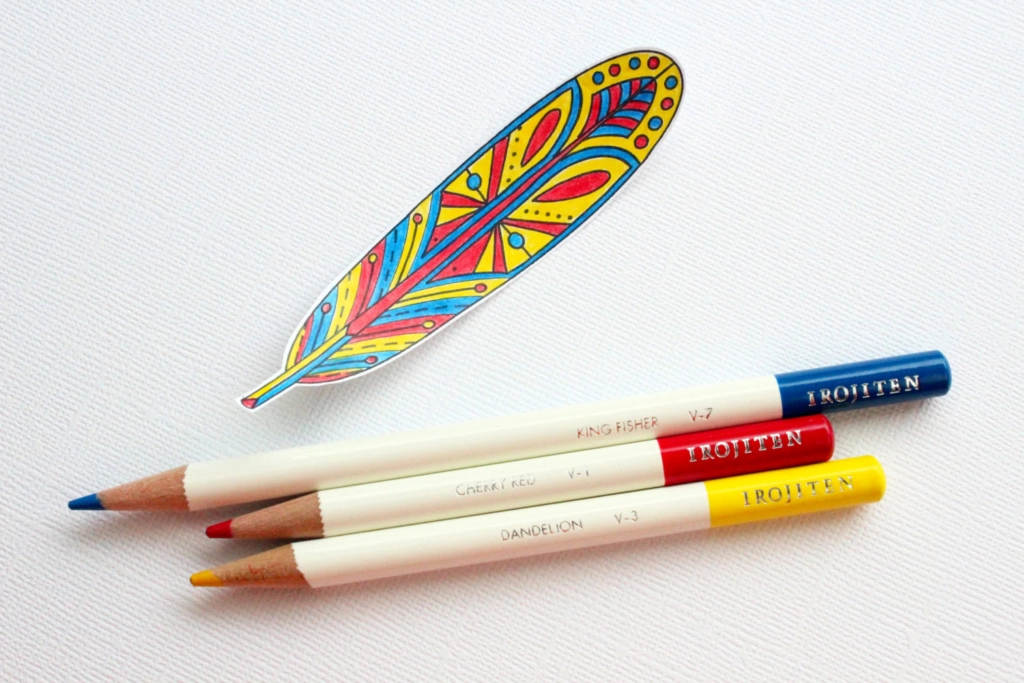
Useful tips for blending with colored pencils
Combining color and blending with colored pencils in a painting makes the lines blurred and the colors look smoother. This way, your drawing design is much more like a professional painting. To achieve such a painting, it is important to observe a few points:
I. Use quality colored pencils!
If you want the color combination of your painting to be beautiful and professional, it is essential to have high quality colored pencils. Because using poor quality colored pencils may stain your work or create colors different from what you have in mind. This way, you will most likely get a lovely painting!

II. Use the right paper for drawing with colored pencils!
The most influential part of a painting is choosing the right surface and the right paper. Because the wrong choice of a suitable paper makes the final design look poor in quality. In fact, to paint, you need a surface with a special texture and tone to the tools you want.
For example, watercolor paper is a rough surface on which you can create multiple layers of paint. But you can never use a colored pencil to show detail on such a surface. So the best option for creating color combinations and layers with colored pencil is white paper.

III. Pay attention to the amount of pressure you put on the colored pencil!
The intensity of the pressure that the hand exerts on it when using colored pencil must be different in different parts of the drawing. Because the intensity of the pressure affects the result and the final color of the design. Paying attention to the amount of pressure in the color combination is also effective. The amount of pressure for a desired color and its shades can be soft, medium and hard.
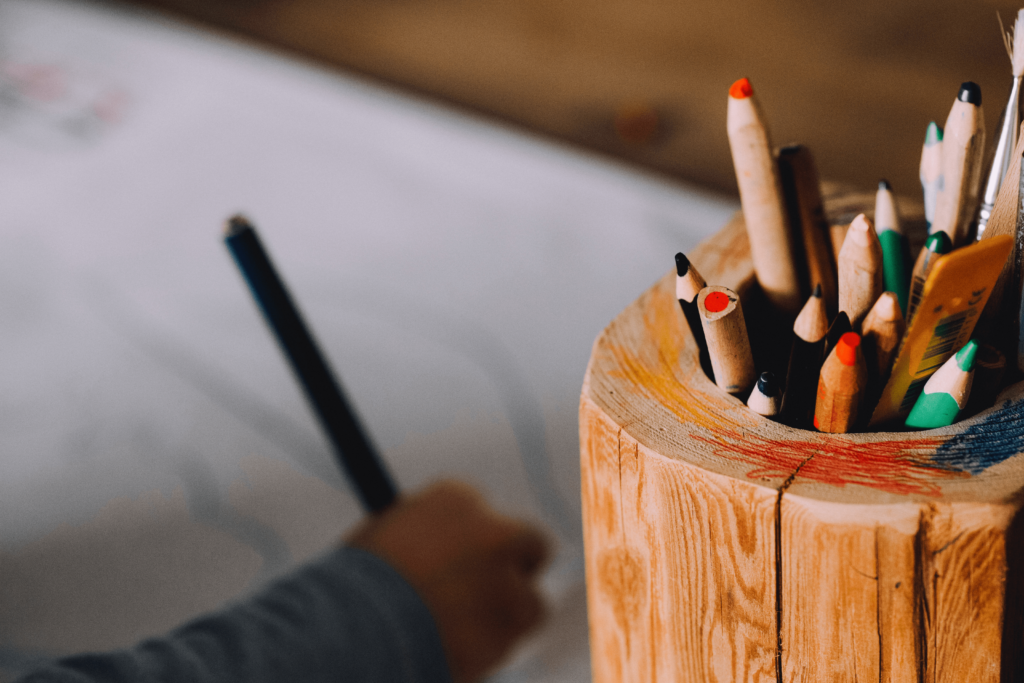
Methods of combining color with colored pencils
If you want to have an amazing painting with a colored pencil color combination, you need to know the techniques and tools of color combination with a colored pencil:
1. Colored pencils layering technique
The fastest, easiest and best technique for combining color with colored pencils is the color layering technique. In this technique, the only tool you need is your pencils. To use this technique, just put layers of your favorite colors on top of each other. Just be careful not to start the first layer too heavy as it will ruin your design.
In this way, start the combination with light layers and gradually add other colors to it. Finally, cover each layer with another. You can also use a colorless pencil to combine the colors of each layer without pigment and better.
A few tips on layering
• Increasing hand pressure on the colored pencil, increases the color concentration but does not darken the color.
• If the layers are made with complementary colors, they darken both colors.
• Never use black as the top layer on another color.
• To darken a color, you can darken the desired color with the closest dark color to the same color. For example, use purple to darken red.
• To lighten a color, place a layer of bright colors on it.
• Creating a white layer on any color makes it clear and bright.

2. Combining colored pencils with solvents
Another way to combine paint with colored pencils is to use a solvent. In fact, the solvent is rubbed on the tip of the colored pencil and is used when the colored pencil is to be used on thick and sturdy paper.
When you use a solvent in your paint, your effect looks like a watercolor effect. There are also more benefits to using a solvent than using water to mix colors, and the end result is much better.
The positive point of using solvent with colored pencils:
The use of oil-based solvents helps a lot to dissolve the wax and is very effective in color combination.
The negative point of using solvent with colored pencils:
The only downside is that solvents are toxic. So you have to use them with caution.
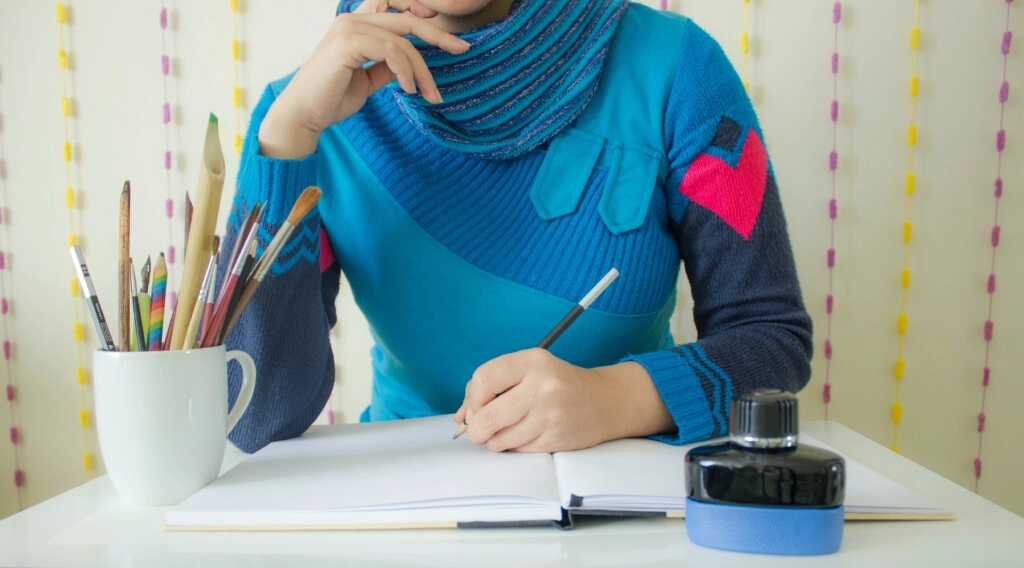
3. Combine colored pencil with water
When using a watercolor pencil for painting, you can use water for ease of work. Although using watercolor pencils is a difficult task and is done by professionals, the first use of watercolor pencils may seem difficult.
For this color combination, draw water with a brush on the painting. Then let the first layer dry. And then drag again on the next layer. You should always pay attention to moisturizing light colors first. Because drawing dark colors towards light is wrong. The reason for this is that the colors show a darker shade when wet.
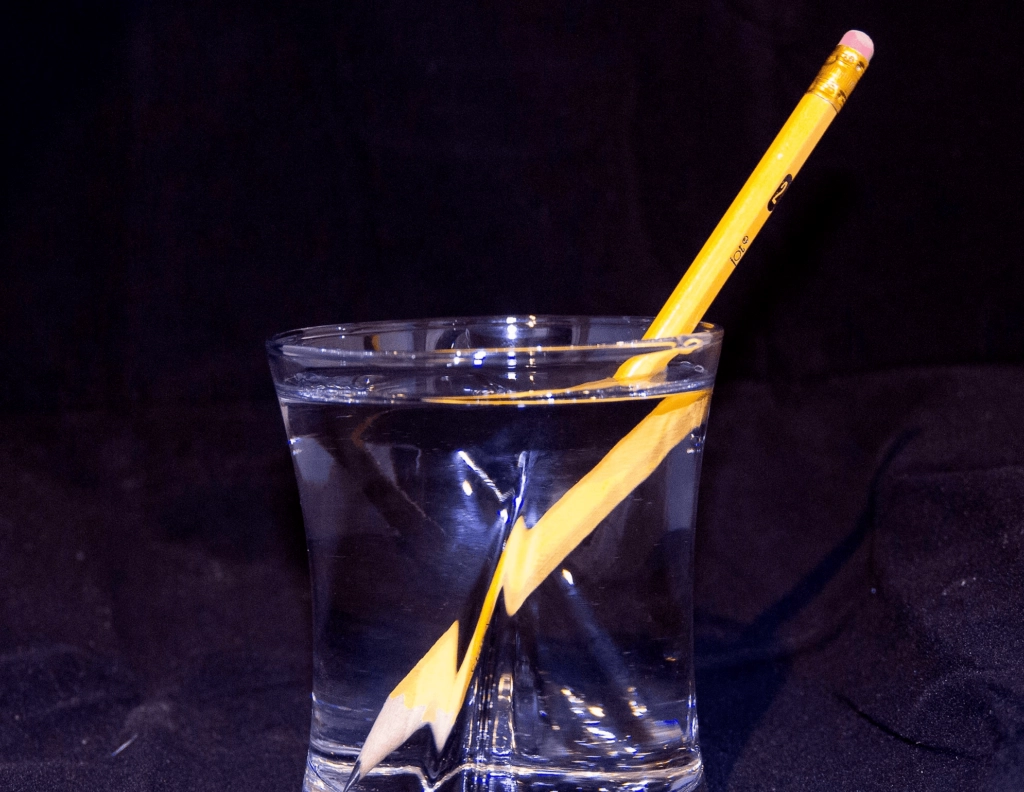
4. Combine colors with colorless blender
A colorless blender is a pencil that every artist should have. These pencils contain substances such as wax and are pigment free. They also help painters a lot in combining colors. Because colorless blenders work great at fading and changing colors.
Of course, you should pay attention to the fact that if your painting is on a large scale, using these pencils is very time consuming. In addition, these colorless blenders make the painting smooth and even. And most of its use is suitable for shades of colors and soft colors.

5. Combine colors using white or gray pencil
Unlike a colorless solvent or colorless blender, the use of white or gray pencils makes the surface of the painting look very smooth. And illuminates the painting naturally. So, if you are looking to lighten your skin tone or depict the afternoon fog, using these two tools is helpful.

How to combine color with colored pencils
I said earlier that combining color with colored pencils is very easy. The combination of colors gives a sense of dynamism to the painting. First of all, a thorough knowledge of colors and color wheel can be a great help to you in combining colors. In this section we will learn how to enter a color combination in a painting. Let’s go:
1. First draw the outlines.
Draw the lines of your desired subject in a light color. Because then you can hide the original color you want on the lines you drew.
2. Add shadows.
I said before that you should switch from light to dark colors. So to create highlights and shadows, you should use the lightest colors. Next, apply the base color by combining the top layers.
3. Add the main color.
After adding the shadows and the base color, add the main color to your chosen design. You can even add another layer of dark gray to the light gray you used for the shadow.
4. Add the final details.
Finally, use dark colors to determine the center shade and darker points of your design. If you are going to use light colors in the last layer, it is better to work on it. Also, use a small amount of white paint to lighten the desired areas to finish.

A few common color combinations
Main colors: blue – red – yellow
Sub-colors: green – orange – purple
Bright colors: main color + white
Dark colors: main color + black
Warm colors: red – yellow – orange
Cool colors: blue – green – purple
The combination of colors
Red + Yellow = Orange
Blue + Red = Purple
Blue + Yellow = Green
Green + Black = Sludge Green
Blue + White = Sky Blue
Red + Black = Crimson
Red + Pink Garlic = Crimson
Yellow (light) + Blue White = Turquoise
Orange + Brown = Henna
Green + Blue = Colorful Turquoise
Blue + Slightly Black = Crimson
Black + White = Gray types
Blue + Yellow + White = Light Green
Blue + Yellow = Light Neutral Green
White + Red + Yellow + Brown = Normal face color
Yellow + White = Lemon
White + Black = Gray
Red + White = Pink
Black + Red + Yellow = Light Brown
Black + Yellow = Greenish Brown
Brown + Red = Peach
Orange + Yellow = Mustard
Black + Orange = Brown
White + Dark Blue = Light Blue
Red + Purple = Purple
Pink + yellow = Cream
Sky blue + Black = Gray
Brown + Yellow + White = Acre
Yellow + White + Brown + Acre = Golden
Blue + Yellow + White = Purple
Green + Red = Oak (Chocolate)
Low black + Yellow + Blue = Jade
Low red + Blue = Indigo
High red + Blue = Magenta
Red + White = Pink
Red + Black = Liver
High red + Yellow + Blue = Brown
Low red + Yellow + Blue = Brown
Blue + Yellow = Green
Blue + Red = Purple
Blue + Black = Crimson
Blue + White = Celestial
Blue + Black + White = Gray
Yellow + Red = Orange
Yellow + Blue = Green
Yellow + White = Pea
Low yellow + Blue + White = Turquoise
Yellow + Light Blue + White = Lemon
High yellow + Blue + Low White = Pistachio kernel
Green + Orange = Brown
Black + yellow = Greenish Brown
Black + Red + Yellow = Light Brown
Red + Green = Brown
Black + Orange = Brown
Color palette inspiration of colored pencil painting
Below are some inspiring color palettes of pencil drawings. Go to Dopely color palette for more color palettes!
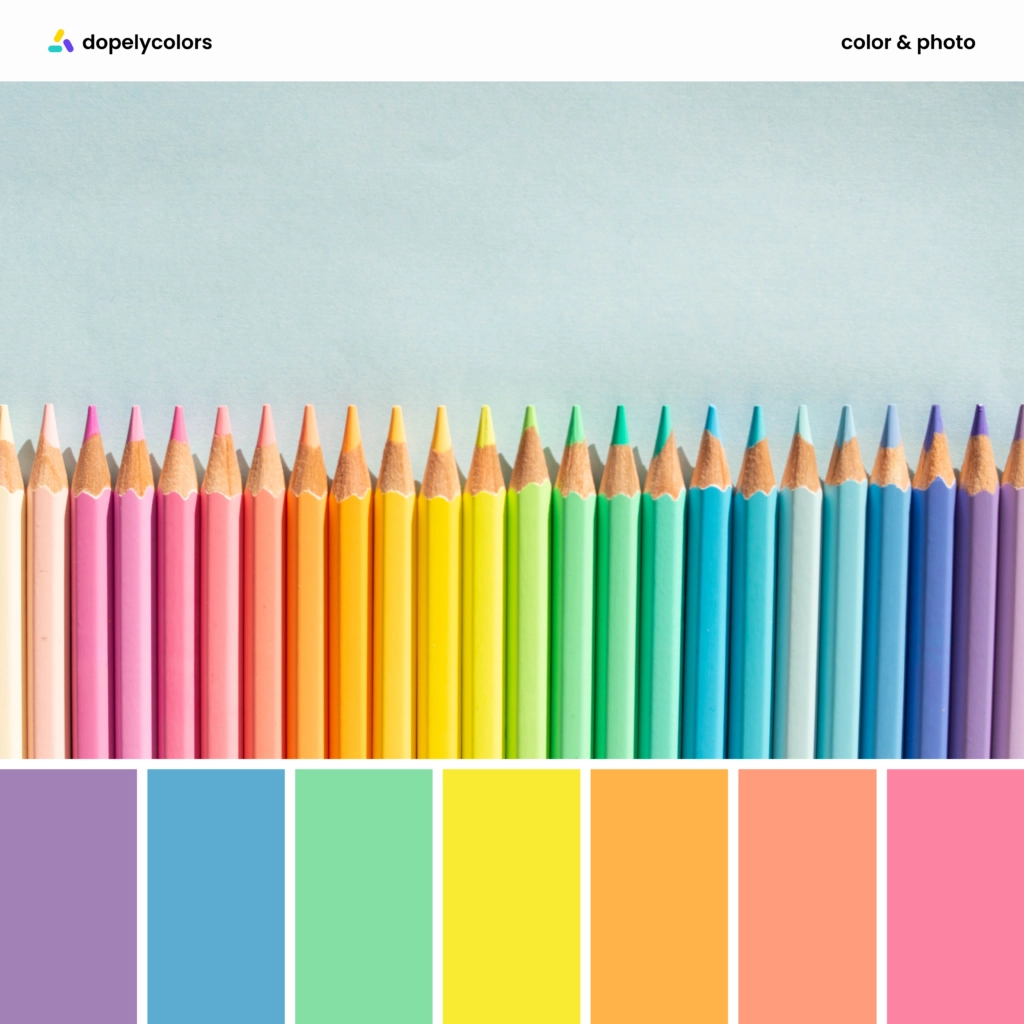




The last word
The effect of colors in today’s world is not hidden from anyone. It is one of the manifestations of color in paintings. There are several tools for drawing, the simplest and most practical of which is a colored pencil. Because you can draw beautiful and extraordinary designs with colored pencils and combine colors easily. I hope this content is helpful.


